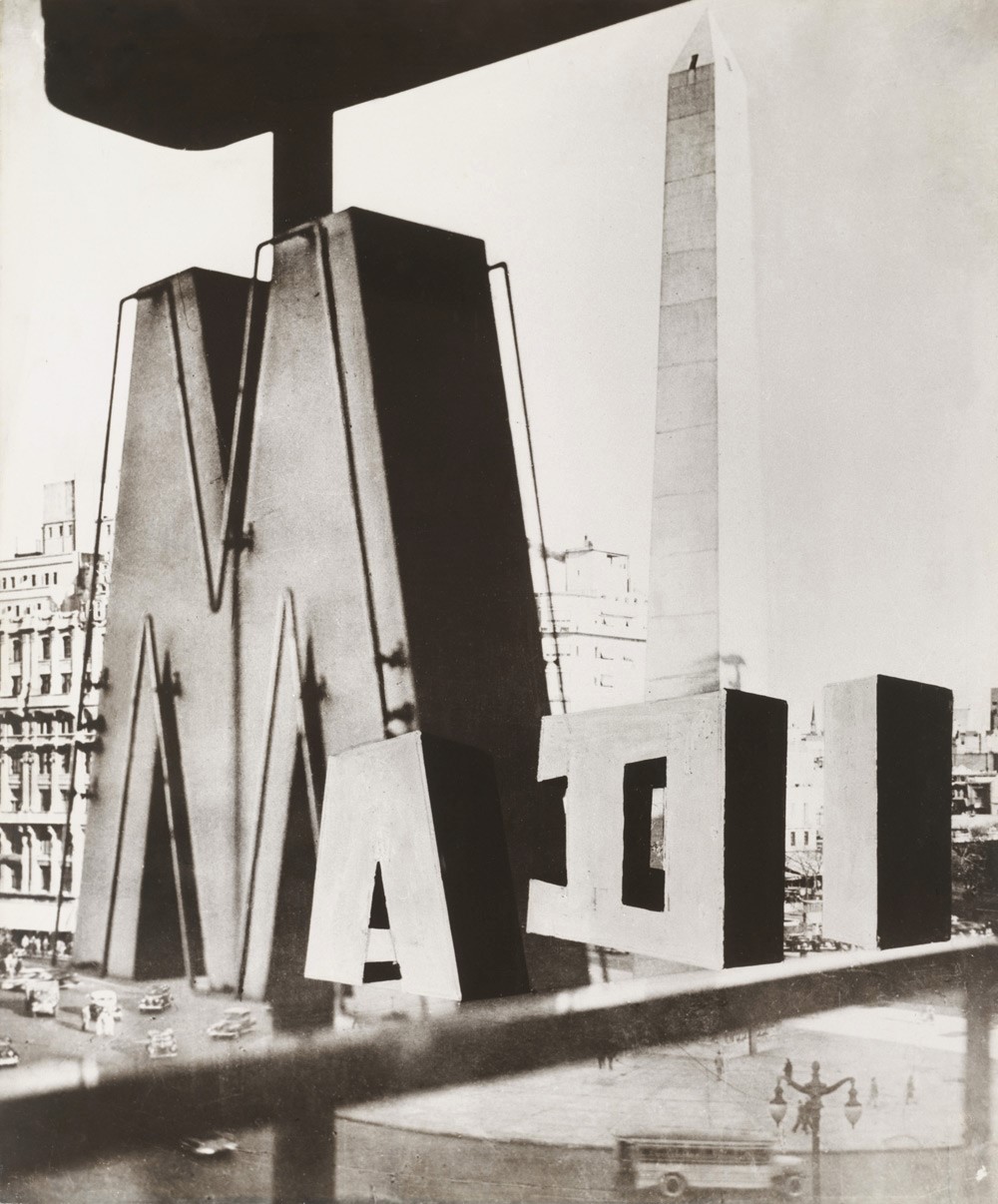Archive
Arte Madí Photomontage
- Photomontage
- Arte Madí Photomontage
Word Count: 3
- Madí Madí, Ramos Mejía, 1947 «M» Fotomontaje Madí
- Grete Stern
- 1947
- 1947
Obelisk,Av. 9 de Julio and Av. Corrientes, Buenos Aires.
- Spanish
- Buenos Aires (AR)
Conceived in 1947 as the logo of the Arte Madí group, this photomontage was devised by two masters of the Argentinian avant-garde, Gyula Kosice and Grete Stern.
Word Count: 26

Grete Stern, Photomontage for Madí, Ramos Mejía, Argentina, 1946–47, Gelatine silver print, 59.8 x 49.4 cm. (via Wikimedia Commons, © The Estate of Horacio Coppola/Galería Jorge Mara • La Ruche, Buenos Aires). Bertúa, Paula. “Devenires de una artista migrante: el destino argentino de Grete Stern.” Revista de Historia Bonaerense, year XXIII, no. 46, 2017, pp. 6–14, https://historiamoron.files.wordpress.com/2017/11/revista46parawpfinal.pdf. Accessed 2 March 2021.
Tell, Verónica. “Grete Stern, Madí – Fotomontaje.” Fundación MALBA, Colección Online, https://coleccion.malba.org.ar/madi-ramos-mejia/. Accessed 2 March 2021.
Word Count: 53
Kosice, Gyula. Kosice. Autobiografía. Ed. Asunto Impreso, 2010.
Word Count: 8
Max Pérez Fallik (Museo Kosice).
Word Count: 6
- Obelisk
Obelisk,Av. 9 de Julio and Av. Corrientes, Buenos Aires.
- Buenos Aires
- Laura Karp Lugo. "Arte Madí Photomontage." METROMOD Archive, 2021, https://archive.metromod.net/viewer.p/69/2950/object/5140-11020231, last modified: 12-05-2021.
-
Grete SternPhotographerBuenos Aires
Grete Stern is one of the photographers that represent modern photography in Argentina. Her house in Ramos Mejía was a meeting place for local and foreign artists and intellectuals.
Word Count: 30
Gyula KosiceSculptorPoetBuenos AiresBorn in Kosice (Slovakia), the four-year-old future artist Gyula Kosice reached Buenos Aires by ship in 1928. He forged ties of friendship with Grete Stern, Horacio Coppola and other artists.
Word Count: 29
Horacio CoppolaFilmmakerPhotographerBuenos AiresBorn in Buenos Aires, Horacio Coppola is one of the photographers who represent modern photography in Argentina.
Word Count: 17
ObeliscoMonumentBuildingBuenos AiresThe Obelisk is undoubtedly the most well-known emblem of the city; it was built by architect Alberto Prebisch in 1936 for the 400th anniversary of the founding of Buenos Aires.
Word Count: 29